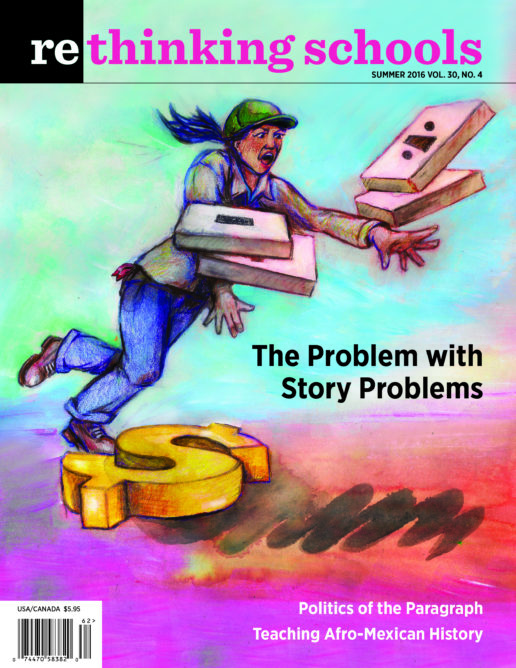Our picks for books and other resources for social justice teaching 30.4
Picture Book
The Book Itch: Freedom, Truth, and Harlem’s Greatest Bookstore
By Vaunda Micheaux Nelson
Illustrated by R. Gregory Christie
(Carolrhoda Books, 2015)
32 pp.
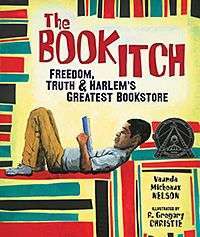
Lewis Michaux’s itch for books led him to found and run the National Memorial African Bookstore in Harlem for four decades beginning in the early 1930s. The store played a key role in African American history as a hub of knowledge, culture, and activism. Michaux’s great-niece Vaunda Nelson introduces the bookstore to young readers through the eyes of the bookseller’s son, Lewis Michaux Jr. Nelson also wrote a Coretta Scott King Award-winning book about the bookstore for middle to high school readers, No Crystal Stair. Both books would be valuable additions to any classroom collection on Black history.
Curriculum
Understanding Mass Incarceration: A People’s Guide to the Key Civil Rights Struggle of Our Time
By James Kilgore
(The New Press, 2015)
272 pp.
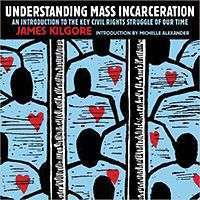
Understanding Mass Incarceration is a strong classroom companion for Michelle Alexander’s The New Jim Crow: Mass Incarceration in the Age of Colorblindness. James Kilgore provides a comprehensive guide in an easy-to-read format. He takes the reader beyond statistics to an exploration of the philosophy, history, and finances of the prison industry. Sections include: Basics of Mass Incarceration, The Many Faces of “Tough on Crime” (drugs, immigration, school-to-prison pipeline), Gendered Threads of Punishment, Prison Profiteers, and Ending Mass Incarceration. Highly recommended for high school use.
Policy
Learning from Counternarratives in Teach For America
By Sarah Matsui
(Peter Lang, 2015)
230 pp.
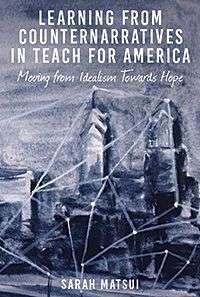
Learning from Counternarratives in Teach For America confronts the glowing official portrayals of Teach For America experiences with narratives by former TFA corps members who offer less rosy accounts of the organization. Although Sarah Matsui focused on just 26 former TFA members from the greater Philadelphia area, their testimonies are revealing and troubling. Matsui points out that some of the most common words these individuals used to describe their TFA experiences are “shame,” “failure,” and “isolating.” Her interviews suggest that TFA is not nurturing future teachers but burning them out. TFAers experienced “alcohol dependency, physical fatigue, major weight changes, strained relationships,” and the need for professional counseling and prescription medications for “depression, anxiety, and trauma.” Matsui’s work joins a growing body of literature that looks past the TFA propaganda. See, for example, Teach For America Counter-Narratives: Alumni Speak Up and Speak Out, edited by T. Jameson Brewer and Kathleen deMarrais (winter 2015-16), which grounds interviews with TFA corps members in a broader critique of neoliberalism.
Videos
The Year We Thought About Love
Directed by Ellen Brodsky
(theyearwethoughtaboutlove.com, 2015)
68 min.
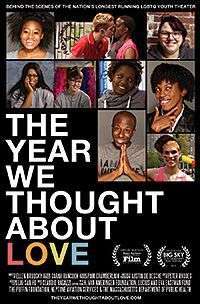
This award-winning documentary highlights the work of True Colors, an LGBTQ youth theater troupe in Boston, as they write, rehearse, and perform a play based on their own experiences. In the beginning of the film (and the school year) they set themselves a challenge: How do we create a story about queer love for middle and high school students, for counselors, and for our families and friends? As the project evolves, we get to know several of the youth individually. Their thoughtfulness, exuberance, and honesty will serve as an entry point for important class and/or staff discussions. Middle school, high school, and staff development.
Gaining Ground
By Elaine Velazquez and Barbara Bernstein
(The Media Project, 2016)
79 min.
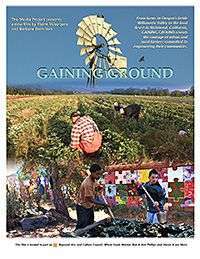
Gaining Ground is a warm and wonderful film that journeys into the future of food and agriculture. We meet the young people who power the Richmond, California, urban agriculture project Urban Tilth. And we visit Oregon farmers who only reluctantly embraced organic agriculture, farmers markets, and community-supported agriculture (CSA) projects. Late in the film, we see how precarious alternatives can be: The Urban Tilth gardens are invaded by a toxic cloud from a fire at the nearby Chevron refinery and farmers in Oregon battle Monsanto’s GMO pollution. The entire film might be too long for some students, but this is the kind of media we need as we help students—and ourselves—imagine local, organic food systems and a future free of fossil fuels.
Disobedience
Directed by Kelly Nyks
(watchdisobedience.com, 2016)
40 min.
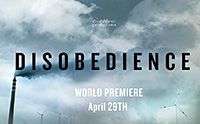
As the fossil fuel industry continues its profit-driven mission to fundamentally alter the climate and, hence, the nature of life on Earth, resistance is growing. One celebration of this resistance is Disobedience, a free-to-download film released online in the lead-up to the May 2016 global actions of civil disobedience. As the causes and consequences of the climate crisis begin to play a more prominent role in the school curriculum, educators need resources that introduce students to the breadth of the movement that is defying business as usual. As Filipina activist Lidy Nacpil says early in the film: “Things are the way they are because we allow it. The moment we do not allow it, we take away our consent, then change happens very, very rapidly.” Like Avi Lewis and Naomi Klein’s film This Changes Everything, Disobedience allows students to meet activists on the frontlines of the fight for climate justice.
Websites
Howard Zinn Website
Although best known for his classic A People’s History of the United States, Zinn wrote and accomplished a lot more. While a professor at Spelman College and Boston University, he participated in the civil rights, anti-war, peace, anti-nuclear, and labor movements. Zinn wrote numerous books, three plays, and countless articles. HowardZinn.org provides an opportunity to learn about Zinn and read or listen to his extensive work. The most recent addition is Zinn’s testimony at the trial of Sam Lovejoy, charged with “malicious destruction” of a weather tower erected at a planned nuclear power plant site. Zinn uses history and wit to rethink assumptions about property, violence, and justice. The site includes lots of classroom-friendly materials.
Fire and Faith: The Catonsville Nine File
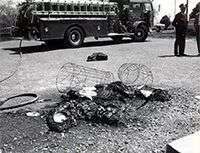
As we assembled these resources for our summer issue, we learned of the death of Father Daniel Berrigan at 94. Berrigan was a leader in the anti-Vietnam War, anti-draft, and anti-nuclear movements. In one important 1968 action in opposition to the U.S. war in Vietnam, Berrigan joined with eight others to remove 378 files from the draft board in Catonsville, Maryland. In a gesture rich with symbolism, the activists burned the files with homemade napalm. In his Catonsville meditation, Berrigan wrote: “Our apologies, dear friends, for the fracture of good order, the burning of paper instead of children.” The story of this resistance to the war in Vietnam and the trial of the Catonsville Nine is told through documents, photos, and audio and video accounts at Fire and Faith: The Catonsville Nine File. This is a fine resource for teaching about the war in Vietnam and those who resisted.

